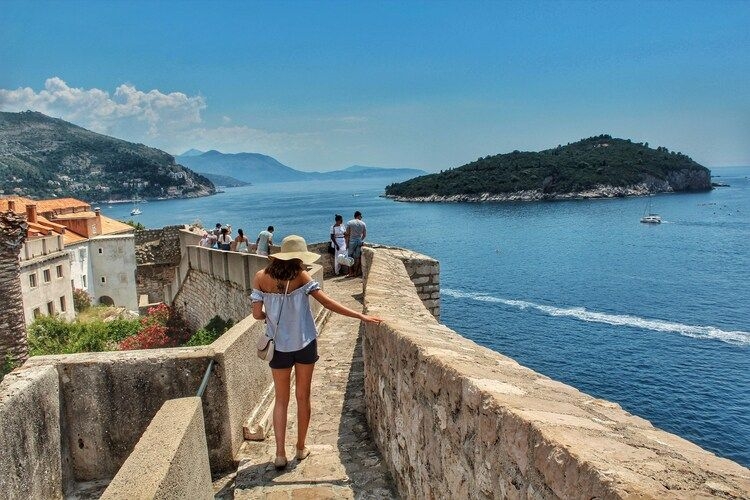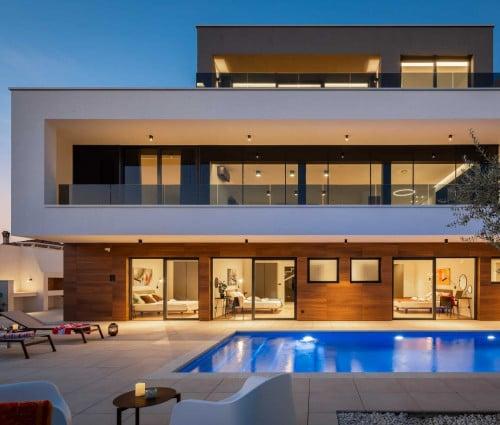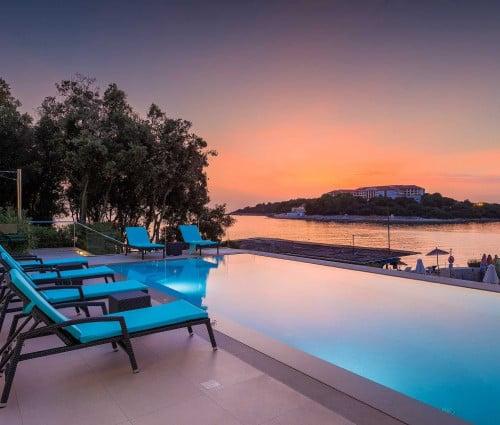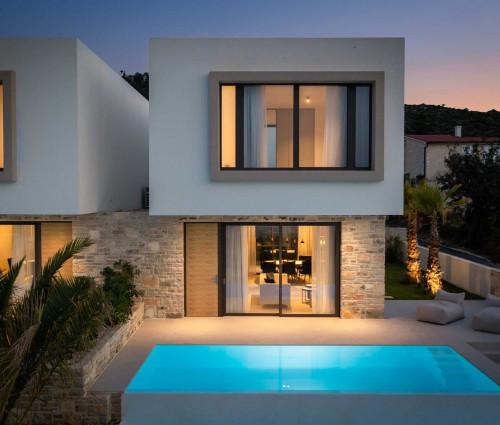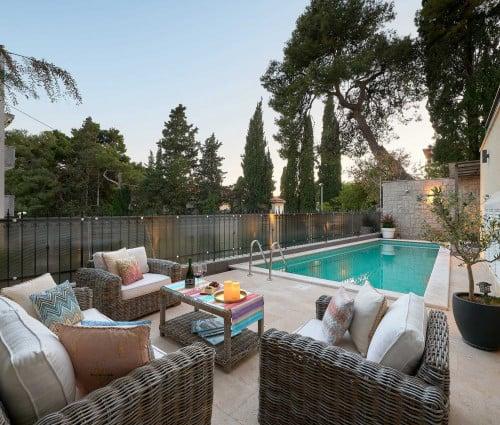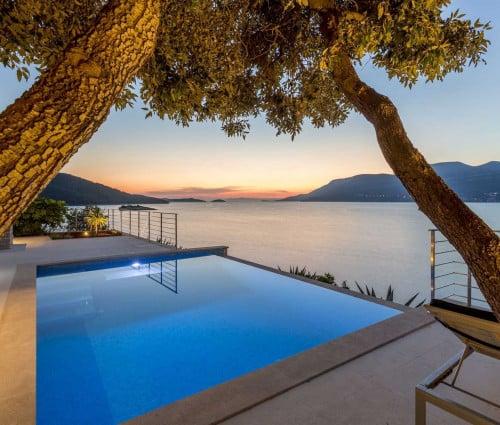
Best Time to Visit Croatia: a month-by-month guide
Find out the best time to visit Croatia and begin planning an epic getaway to remember.
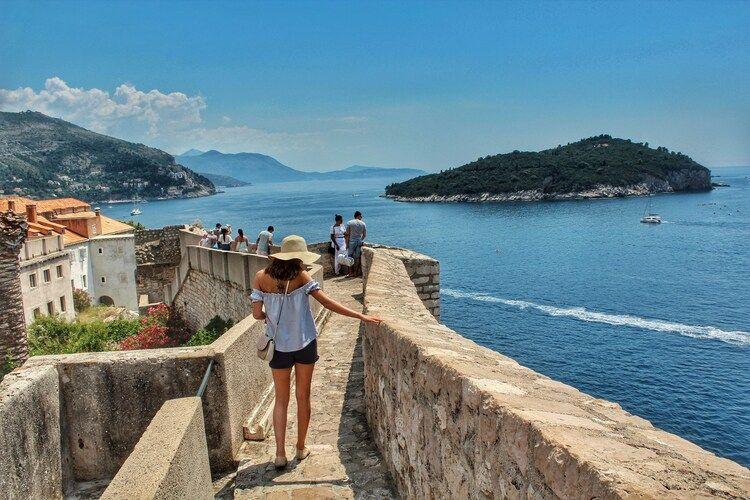
When is the best time to visit Croatia?
Many consider the shoulder seasons (May-June and September-October) the best time to visit Croatia. Offering the perfect combination of wonderful weather, fewer tourist crowds and lower accommodation costs, these months ensure you can reach and experience the best of Croatia, with ease. Saying this, Croatia offers something phenomenal to enjoy in every season!
Whether you're looking to enjoy the heritage attractions, breathtaking nature parks, the best beaches in Croatia, top seasonal festivals, wine tasting and truffle season or fun outdoor activities, read on to find your perfect travel month.
Popular Croatia Villa Rentals
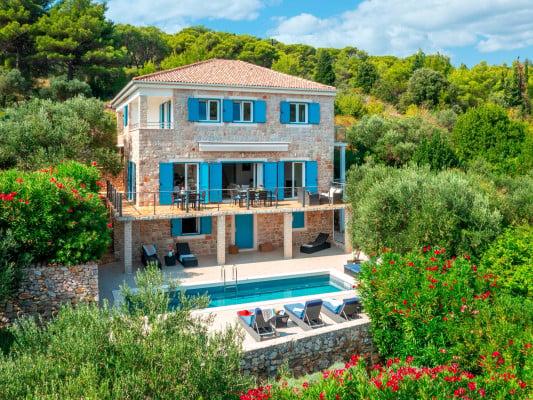






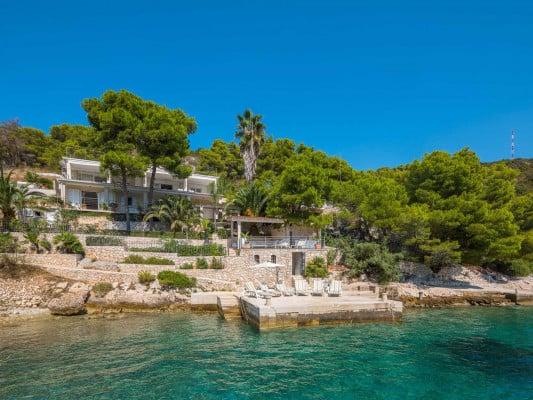
Best Time to go to Croatia: Month-by-Month Guide
Croatia’s stunning coastline, historic towns, and vibrant culture make it a year-round destination. Whether you're looking for sunny beach days, cultural festivals, or outdoor adventures, each month has something unique to offer. Here’s a month-by-month breakdown, including average temperatures, top events, and the best time for different types of travelers.
Croatia in January
Average Temperature: 5°C - 10°C (41°F - 50°F)
Best for: Winter sports, city sightseeing, cultural experiences
Activities: Skiing in the Dinaric Alps, exploring Zagreb’s museums, enjoying quiet Old Towns in Dubrovnik and Split
Top Events: New Year’s celebrations, Rijeka Carnival preparations

January is a magical time to visit Croatia, with its charming holiday lights still lingering and fewer tourists crowding the streets. The capital city, Zagreb, is perfect for those looking to experience cultural and historical sites without the summer rush. The museums and galleries, such as the Museum of Broken Relationships, offer fascinating insights into Croatian and global culture.
For those seeking outdoor adventures, the Dinaric Alps provide excellent skiing opportunities at resorts like Sljeme near Zagreb or Platak near Rijeka. Plitvice Lakes National Park can sometimes be frozen over, creating a surreal and picturesque winter wonderland perfect for nature lovers and photographers. Meanwhile, the coastal cities, though cooler, offer a serene experience for travelers looking to enjoy historic streets without the crowds.
Croatia in February
Average Temperature: 6°C - 11°C (43°F - 52°F)
Best for: Cultural events, off-season city breaks
Activities: Visiting Plitvice Lakes (sometimes frozen), coastal wine tasting
Top Events: Rijeka Carnival (one of Europe’s biggest), Valentine’s Day getaways

February is a vibrant month in Croatia, thanks to the famous Rijeka Carnival. Known as one of Europe’s largest and most colorful carnivals, this event fills the streets with parades, music, and elaborate costumes, making it a must-see experience. Rijeka transforms into a lively hub of celebrations, where visitors can join the festivities and enjoy the city’s buzzing atmosphere.
For couples looking for a romantic escape, Dubrovnik offers an enchanting experience with its ancient walls, candlelit seafood restaurants, and breathtaking views from Mount Srđ. Wine lovers can enjoy tastings in Istria, where local wineries provide intimate experiences showcasing some of Croatia’s best wines. February’s mild weather on the coast also makes it a great time for scenic strolls along the Adriatic.
Croatia in March
Average Temperature: 8°C - 14°C (46°F - 57°F)
Best for: Nature lovers, spring getaways
Activities: Hiking in Krka National Park, early spring festivals, city explorations without crowds
Top Events: Spring wine festivals, Zagreb’s Festival of Lights

March marks the beginning of spring in Croatia, bringing with it mild temperatures and blooming landscapes. This is the perfect time to explore Croatia’s national parks, such as Krka and Plitvice, where waterfalls flow at their fullest after winter rains. The trails are quieter than in peak summer, making it ideal for nature lovers seeking tranquility.
Zagreb’s Festival of Lights is another highlight of March, transforming the city’s historic buildings and streets into a mesmerizing light show. This event attracts both locals and tourists looking to experience Croatia’s artistic side in a unique way. Additionally, coastal towns like Split and Zadar begin to awaken from their winter slumber, offering travelers an authentic glimpse into local life before the summer crowds arrive.
Croatia in April
Average Temperature: 11°C - 18°C (52°F - 64°F)
Best for: Couples, adventure seekers
Activities: Cycling, kayaking, exploring Dubrovnik before peak season
Top Events: Easter celebrations, Outdoor Croatia events

April is an excellent month for adventure enthusiasts, as Croatia’s weather becomes more favorable for outdoor activities. Cyclists can explore scenic routes through Istria’s rolling hills, while kayakers can paddle along the Adriatic coastline, discovering hidden coves and sea caves. Dubrovnik, one of Croatia’s most iconic cities, is best explored in April before the peak tourist season begins. Walking along its medieval walls without the summer heat allows visitors to fully appreciate the stunning views of the Old Town and the shimmering Adriatic Sea.
Easter is widely celebrated across Croatia, with colorful processions and traditional feasts taking place in towns like Sibenik and Zadar. Local markets brim with fresh produce and handmade crafts, offering visitors a taste of authentic Croatian culture. Whether you’re seeking adventure or a cultural escape, April is a fantastic time to visit Croatia.
Croatia in May
Average Temperature: 15°C - 23°C (59°F - 73°F)
Best for: Beachgoers, nature lovers, festival-goers
Activities: Sunbathing, national park hikes, island hopping
Top Events: Sea Star Festival in Umag, International Workers’ Day celebrations

May is when Croatia truly comes to life, with warm temperatures and lush green landscapes. The beaches start welcoming sun-seekers, while the Adriatic waters become inviting for early swimmers. National parks like Paklenica and Mljet are at their most picturesque, perfect for hiking and wildlife spotting. The Sea Star Festival in Umag attracts music lovers from across Europe, offering an energetic start to summer.
Croatia in June
Average Temperature: 19°C - 28°C (66°F - 82°F)
Best for: Island hoppers, music festival enthusiasts
Activities: Sailing, coastal nightlife, beach relaxation
Top Events: INmusic Festival in Zagreb, St. John’s Eve celebrations
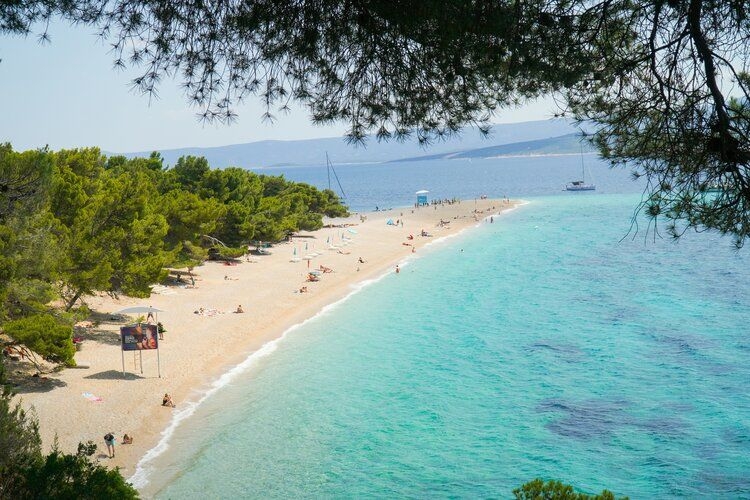
June is ideal for travelers looking to experience Croatia’s vibrant summer scene before the peak crowds arrive. It’s a great time for island hopping, particularly to Hvar, Brac, and Korcula, where visitors can enjoy a mix of nightlife, culture, and beach lounging. Music lovers will enjoy the INmusic Festival in Zagreb, Croatia’s largest open-air music event featuring international headliners.
Croatia in July
Average Temperature: 22°C - 33°C (72°F - 91°F)
Best for: Beach lovers, families, festival-goers
Activities: Swimming, partying, sightseeing
Top Events: Dubrovnik Summer Festival, Ultra Europe Festival in Split

July is one of the hottest and liveliest months in Croatia, perfect for sun-seekers and festival enthusiasts. The beaches along the Dalmatian Coast are at their most inviting, with crystal-clear waters ideal for swimming and sailing. Hvar, Brac, and Vis are top destinations for travelers looking to enjoy stunning beaches and vibrant nightlife. In Dubrovnik, the Summer Festival fills the historic city with performances, concerts, and cultural events.
Ultra Europe Festival in Split is a major draw for electronic music fans, attracting visitors from around the world. Families will enjoy the calm waters of Istria’s beaches, where shallow coves provide safe swimming for children. Whether you’re looking for beach relaxation, cultural experiences, or party hotspots, July is an exciting time to visit Croatia.
Croatia in August
Average Temperature: 23°C - 34°C (73°F - 93°F)
Best for: Island hopping, outdoor nightlife, water sports
Activities: Snorkeling, yachting, cultural sightseeing
Top Events: Sinjska Alka tournament, Pula Film Festival

August continues the summer buzz, with warm temperatures and bustling coastal destinations. The Adriatic Sea is perfect for water activities, from snorkeling in the Blue Cave on Biševo to yacht trips between the islands. Hvar remains a hotspot for nightlife, while Brac and Korcula offer a mix of relaxation and exploration. The historic Sinjska Alka tournament, held in Sinj, is a fascinating event showcasing Croatia’s medieval heritage.
Pula Film Festival, hosted in the ancient Roman amphitheater, provides a unique cinematic experience under the stars. The coastal cities remain full of energy, making August ideal for travelers seeking a mix of adventure, culture, and beach relaxation.
Croatia in September
Average Temperature: 18°C - 27°C (64°F - 81°F)
Best for: Wine lovers, island explorers, culture seekers
Activities: Vineyard tours, hiking, sightseeing
Top Events: Grape harvest festivals, Split Film Festival

September is one of the best months to visit Croatia, as the summer crowds begin to thin while the warm weather lingers. The Adriatic remains ideal for swimming, and popular islands like Hvar, Korčula, and Brač offer a more relaxed atmosphere. Wine enthusiasts can visit Istria and Dalmatia for the grape harvest season, experiencing wine tastings and vineyard tours at top wineries.
Hikers will find pleasant conditions for exploring national parks like Paklenica and Plitvice Lakes, where waterfalls remain stunning after the summer. Culture lovers can enjoy the Split Film Festival, which showcases a mix of international and Croatian cinema. With its perfect balance of good weather and fewer tourists, September is an excellent time to experience Croatia’s best offerings.
Croatia in October
Average Temperature: 13°C - 19°C (55°F - 66°F)
Best for: Nature lovers, photography enthusiasts, cultural explorers
Activities: Hiking, wine tasting, sightseeing, exploring historic towns
Top Events: The Zagreb Film Festival, International Festival of Adventurous Films in Zadar, Olive Picking Season

October marks the arrival of autumn in Croatia, with cooler temperatures and stunning landscapes. This is a great time for hiking in places like Plitvice Lakes National Park and Krka National Park, where the fall foliage creates breathtaking scenery perfect for photography. Visitors can also explore the charming historic towns of Dubrovnik and Split without the crowds, immersing themselves in Croatian culture and history. October is also harvest season for olive trees, so be sure to join an olive picking tour and sample some of the region’s finest olive oils.
Croatia in November
Average Temperature: 9°C - 14°C (48°F - 57°F)
Best for: Quiet getaways, foodies, history buffs
Activities: Wine tasting, exploring UNESCO sites, visiting museums and galleries
Top Events: Zagreb Advent Festival, Fiumanka Regatta in Rijeka, Festival of Light in Split
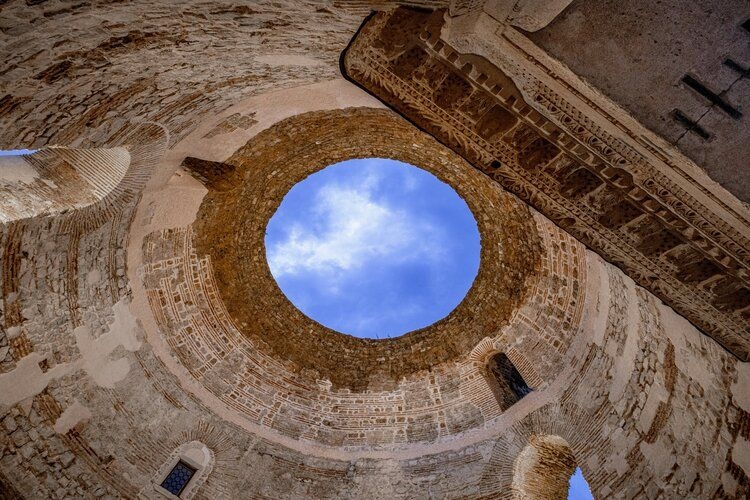
November brings a quieter atmosphere to Croatia, ideal for those seeking a peaceful escape. The cooler temperatures make it perfect for exploring the country's UNESCO World Heritage Sites, such as the historic center of Dubrovnik or the Diocletian's Palace in Split, without the summer crowds. Food enthusiasts will appreciate the seasonal delicacies, including truffles and chestnuts, and November is an excellent time to enjoy a wine tasting in regions like Istria, where the harvest season is still fresh. The Zagreb Advent Festival, which marks the start of the holiday season, adds to the charm of the month, with its festive markets and lights.
Croatia in December
Average Temperature: 5°C - 10°C (41°F - 50°F)
Best for: Holiday seekers, festive atmosphere lovers, winter sports enthusiasts
Activities: Christmas markets, sightseeing, winter sports
Top Events: Zagreb Advent Festival, Dubrovnik Winter Festival, New Year’s Eve celebrations

December is the perfect month to experience Croatia's enchanting holiday spirit. The Zagreb Advent Festival, often ranked among Europe's best Christmas markets, transforms the city into a festive wonderland with lights, music, and seasonal treats. Coastal cities like Dubrovnik and Split also embrace the holiday spirit with winter festivals, where visitors can enjoy festive markets and the warm Mediterranean charm despite the cooler temperatures. For those who enjoy winter sports, the nearby mountain resorts such as Platak offer a great opportunity for skiing and snowboarding. December is a wonderful time to enjoy Croatia's rich history and culture while soaking in the holiday festivities.
A Quick Guide to the Best Months to Visit Croatia
To help you plan your trip, here are answers to some frequently asked questions about the best time to visit Croatia:
When is Croatia hot?
Croatia experiences its hottest weather during July and August, with temperatures often reaching up to 30°C (86°F) or higher, especially along the Adriatic coast.
What is the peak tourist season in Croatia?
The peak tourist season runs from mid-May through early October, peaking in early August.
##When is the best time to avoid crowds in Croatia?
To avoid crowds while still enjoying pleasant weather, consider visiting in May or September. These months offer warm temperatures and fewer tourists compared to the peak summer months.
Is it possible to swim in Croatia in October?
While the sea temperatures begin to cool in October, it's still possible to swim, especially in the early part of the month. However, be prepared for cooler water compared to the summer months.
Are tourist attractions open year-round in Croatia?
Major tourist attractions in cities like Zagreb, Split, and Dubrovnik remain open year-round. However, some coastal resorts and island facilities may close or reduce operations during the off-season, particularly from November to April.
